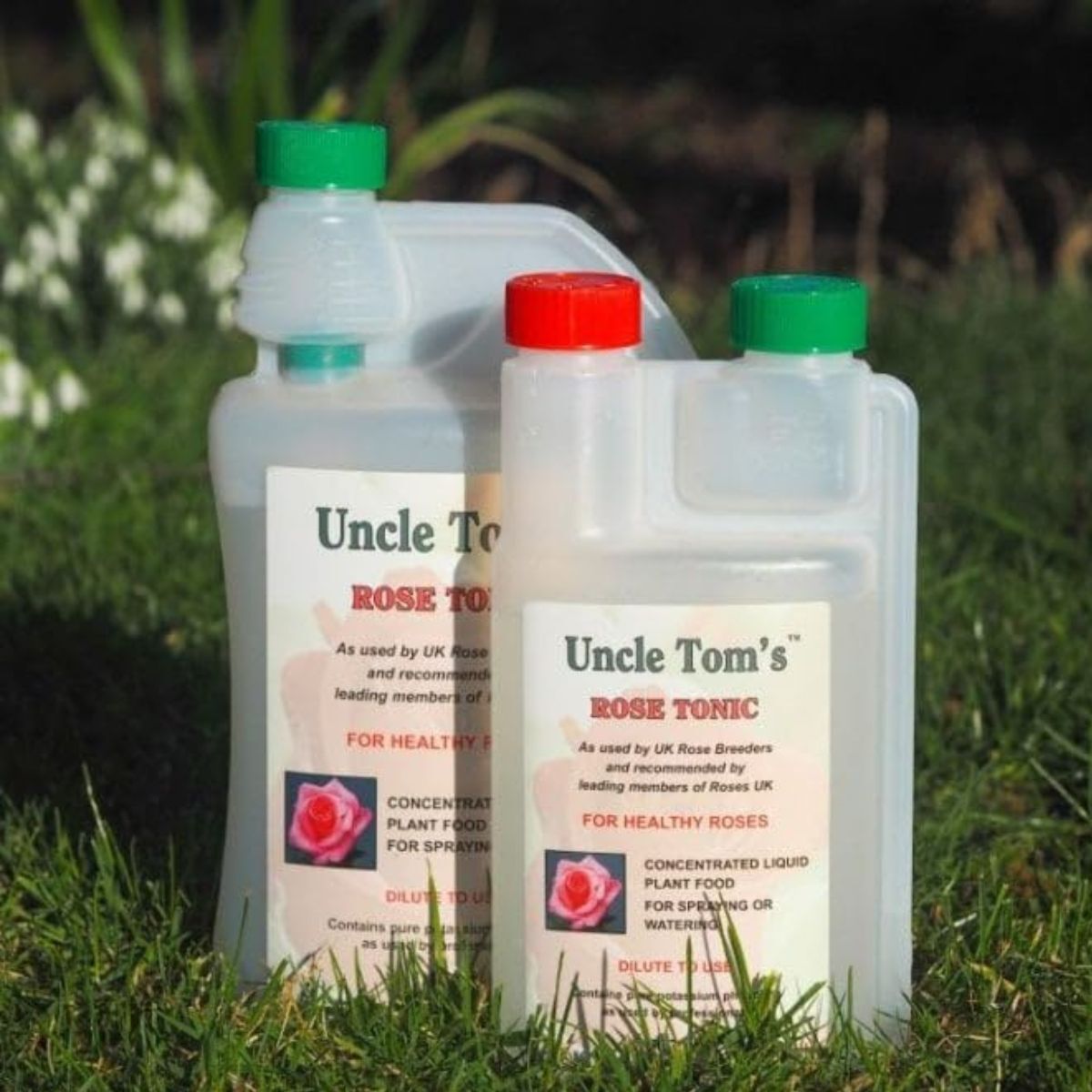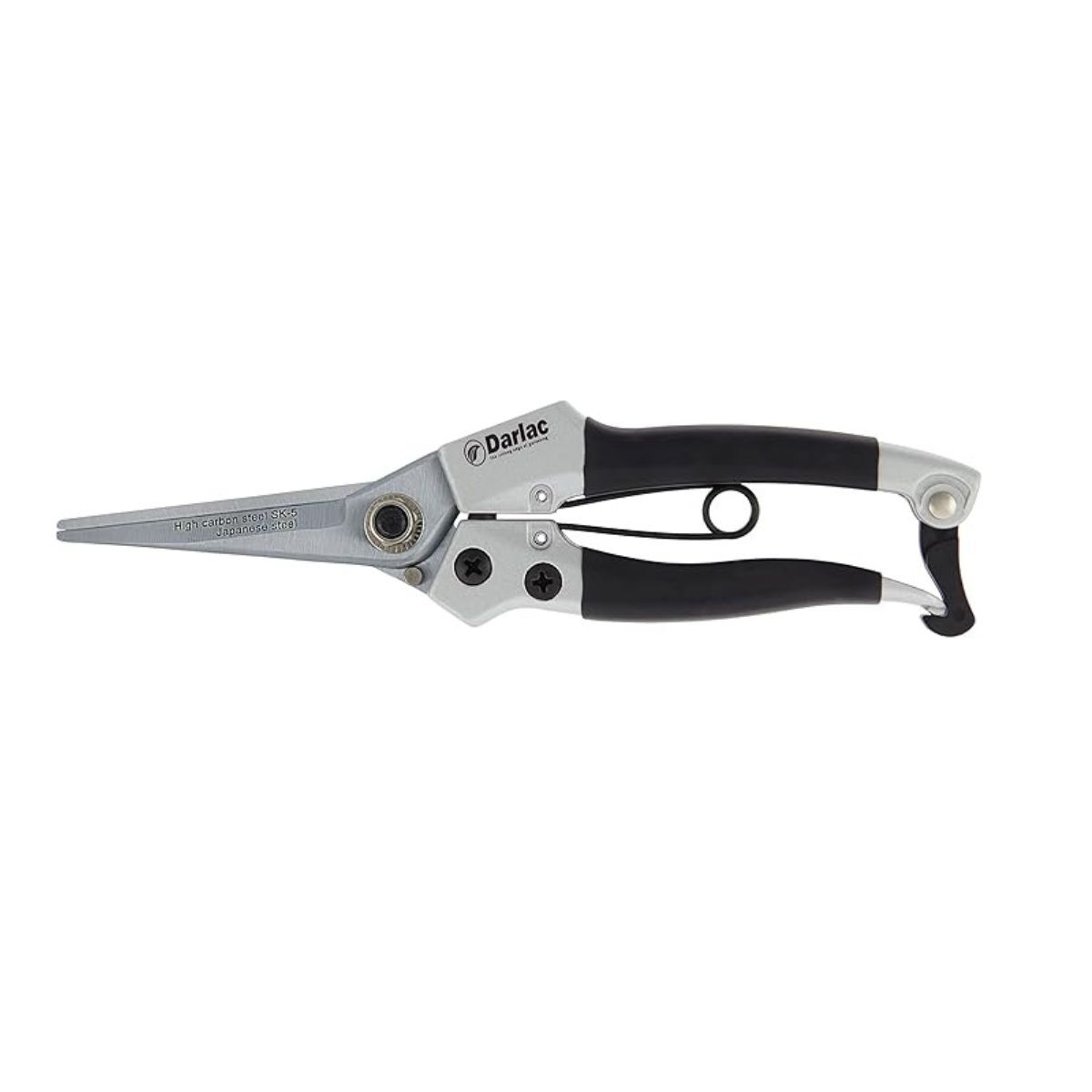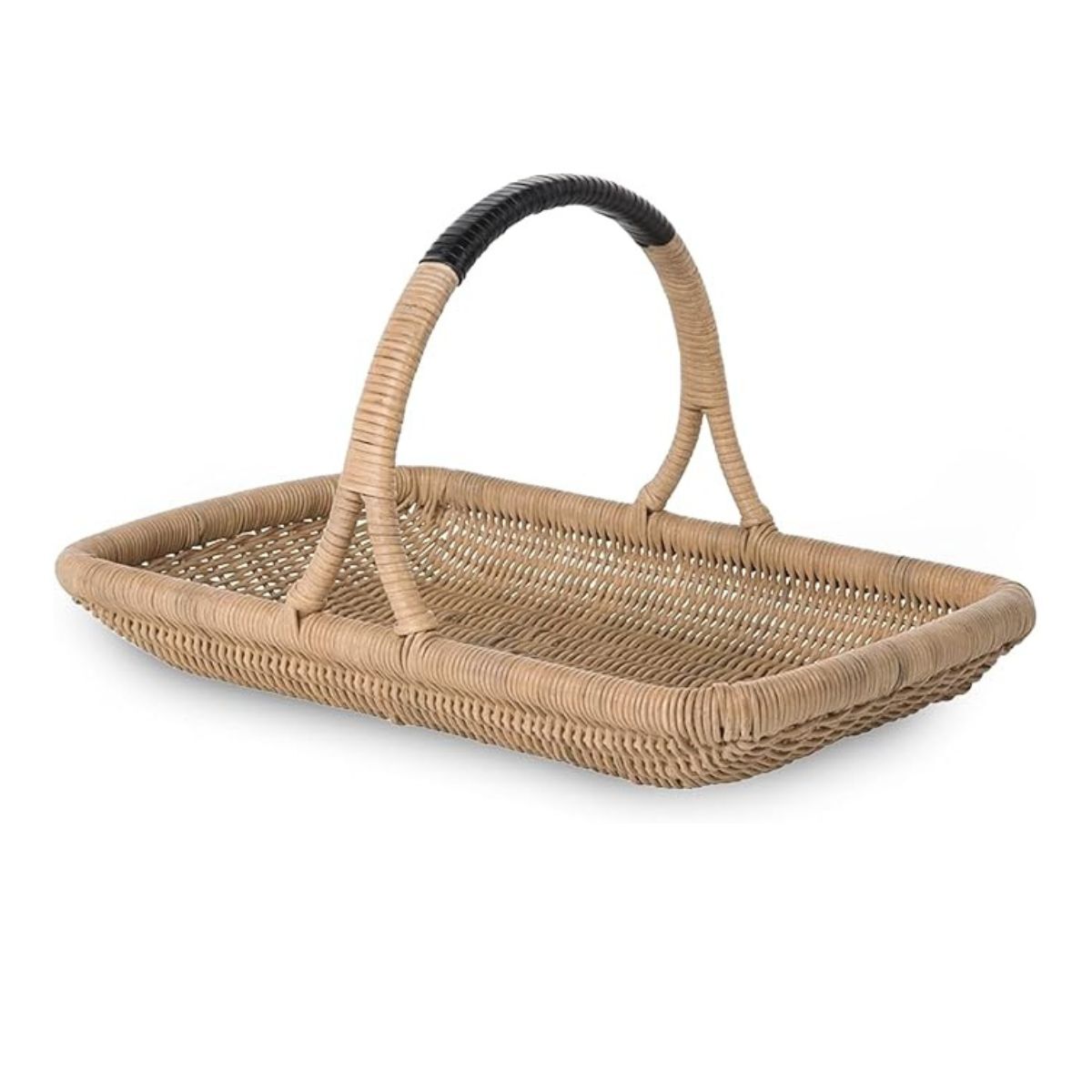Best roses for rosehips – 6 varieties to guarantee bumper crops of hips from fall and throughout winter
The rosehip is the fruit of the rose, appearing after the flowers and delivering much-needed color in the winter garden

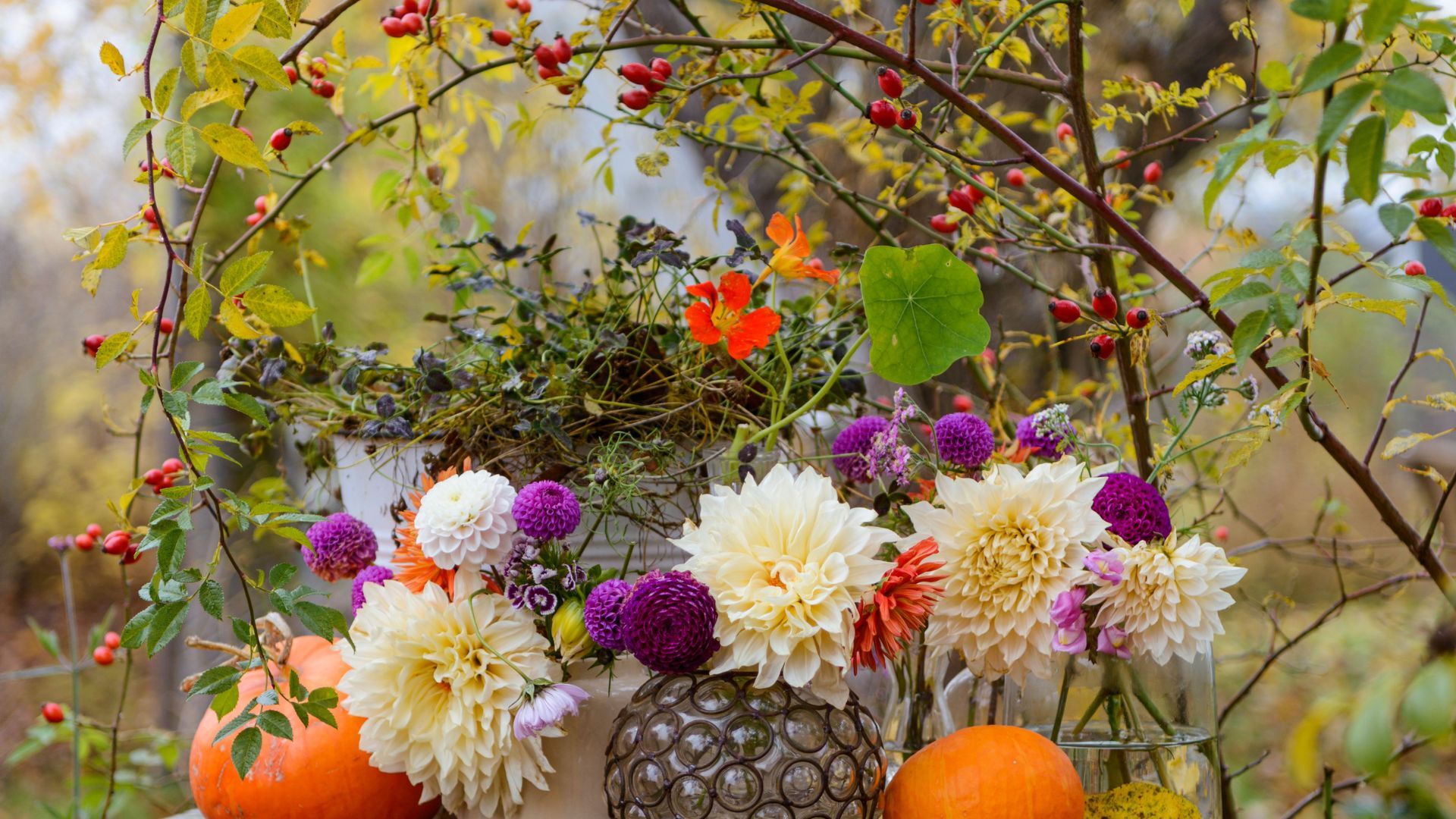
Most rose fanatics grow roses for their flowers, but the more in love with roses you fall, the more their ornamental hips become just as exciting and hotly anticipated as the flowers themselves.
Whilst many rose varieties fruit into lovely, curvy hips, many do not produce rosehips at all. For the most part, the best roses for rose hips are those with single or semi-double flowers and those that don’t repeat flower. But, as ever with gardening, that is not a hard and fast rule. Hips can be rounded, oval, elongated, pear, flask-shaped, red, orange, yellow, chocolate brown, and even, astonishingly, jet black.
When I am selecting the roses to incorporate into a rose garden scheme, I tend to think first about the season of interest, and I always select at least one of these six best roses for rosehips, as they extend the season so dramatically with their ravishing hips, in my opinion just as beautiful, if not more so, than the flower itself.
6 best roses for rosehips
1. Master Hugh Rose (Rosa macrophylla)
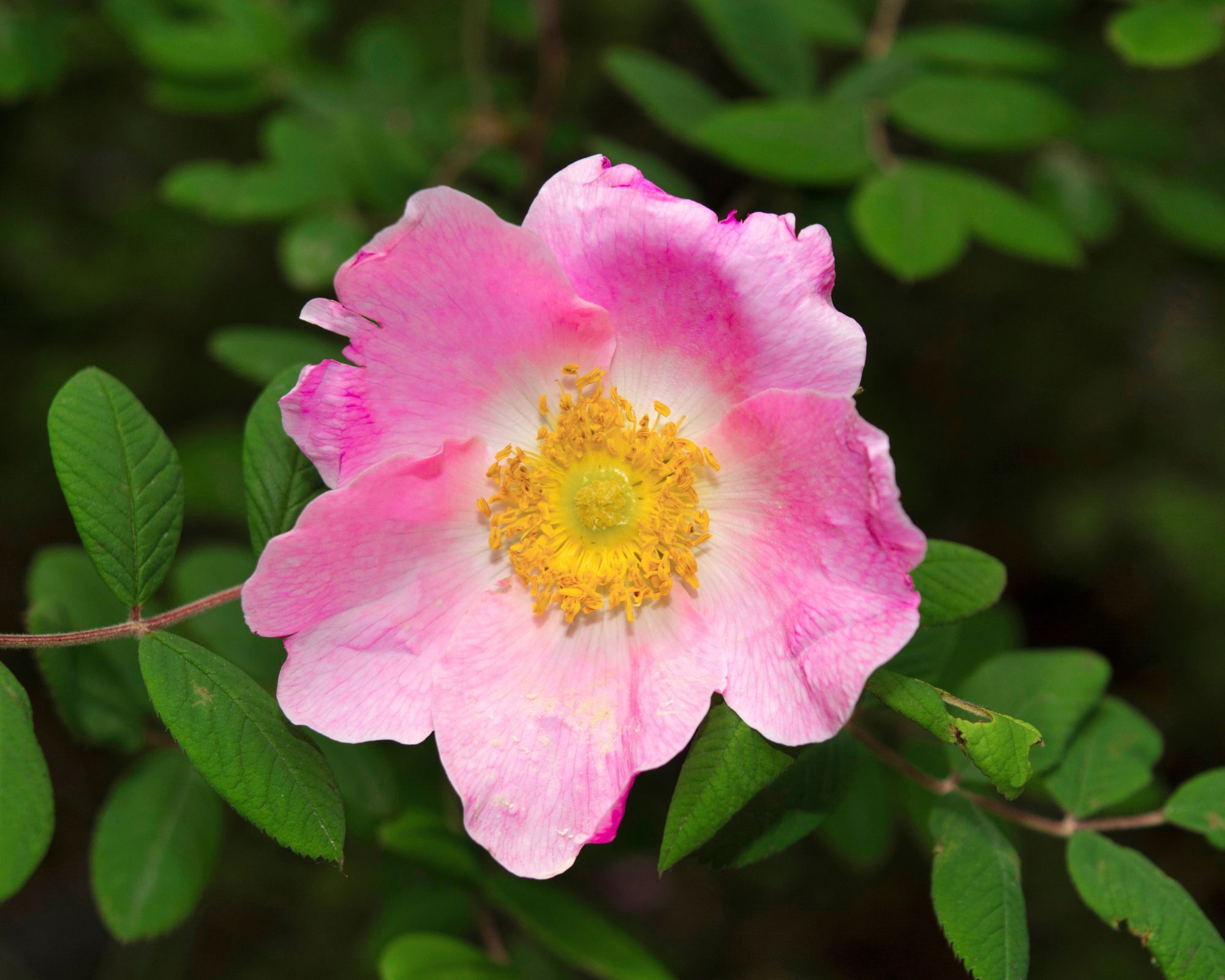
R. macrophylla ‘Master Hugh’ is in the wild rose family and produces pink flowers and large lantern shaped rosehips
The rosehips that this handsome wild rose produces have to be seen to be believed. It is the host to some of the largest hips to be found among roses.
These hips are preceded by bracted clusters of dog-rose pink blooms in June and July. Once flowering dwindles, plump flagon-shaped hips up to 2 inches in length erupt in a brilliant fiery orange-red color.
These rosehips persist into winter and make for the most stunning Christmas wreath or Christmas table decor when intertwined with sprigs of holly, ivy, and bay.
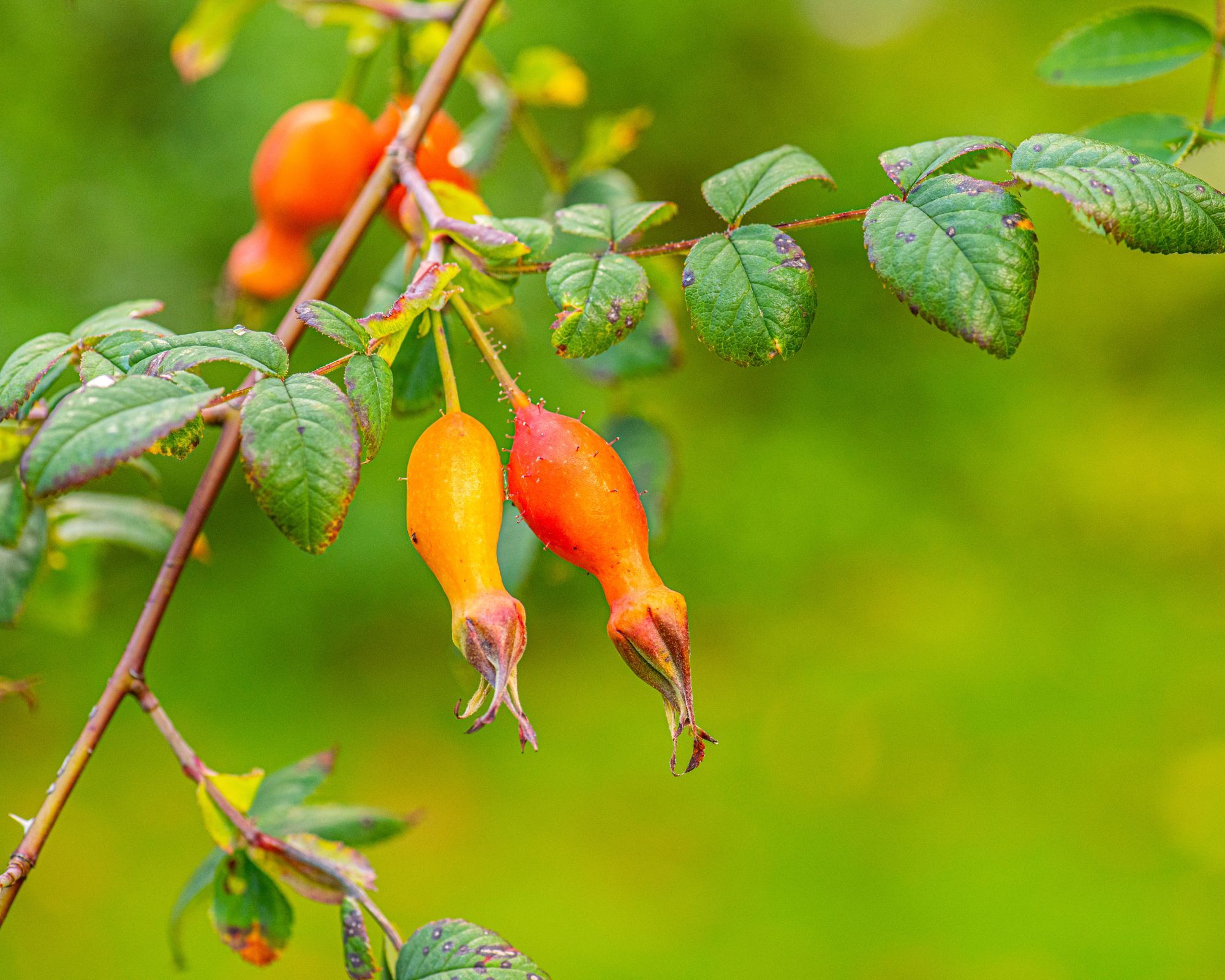
Long rosehips on Rosa macrophylla
2. Scotch Rose (Rosa spinosissima)
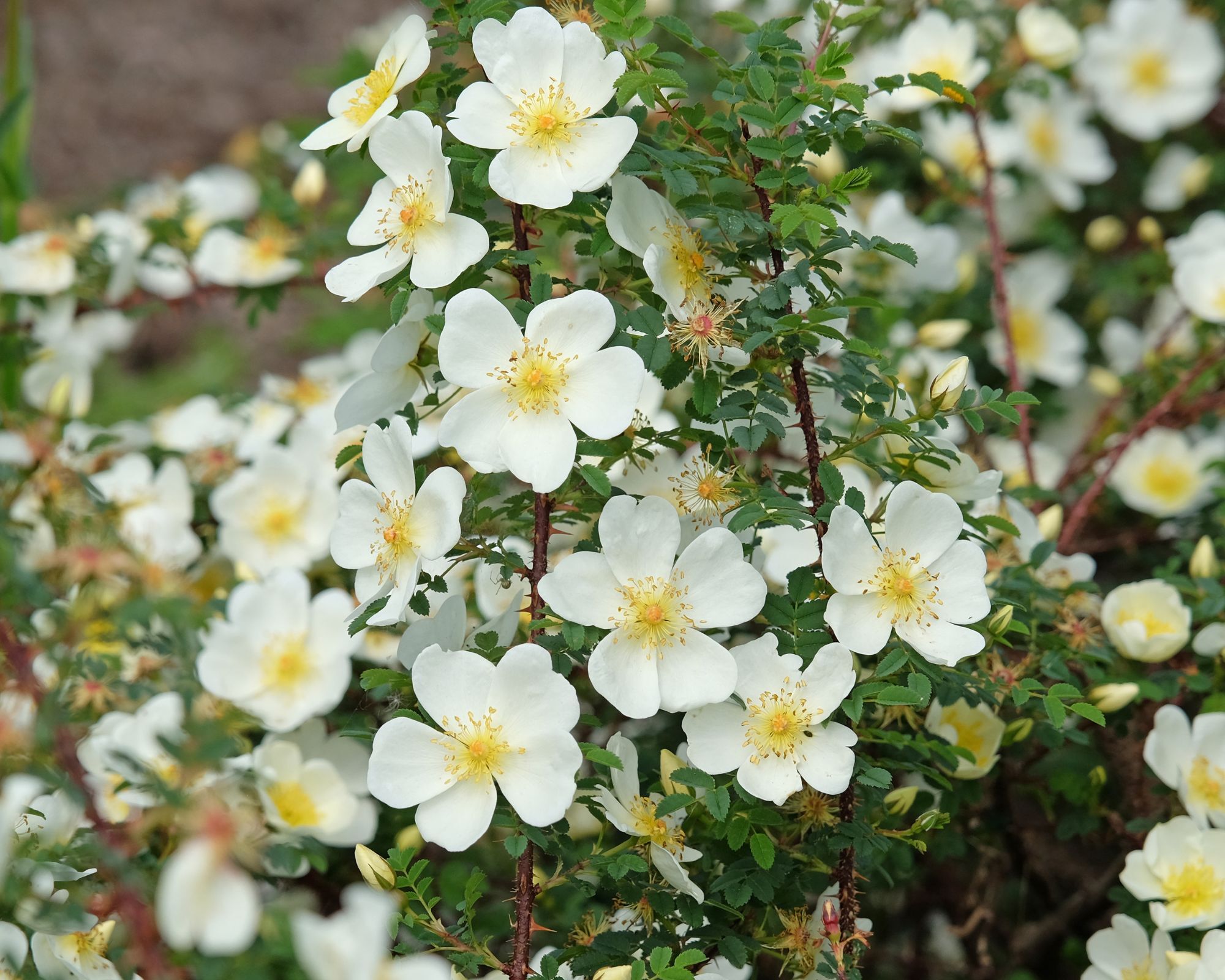
The Scotch rose ('Rosa spinosissima') is a species rose of great antiquity, and one which enriches any garden scheme.
Design expertise in your inbox – from inspiring decorating ideas and beautiful celebrity homes to practical gardening advice and shopping round-ups.
This low-growing rose makes for a terrific ground cover plant, with a profusion of cupped single creamy-white flowers in summer, all with a heady fragrance, followed by fat, inky black hips.
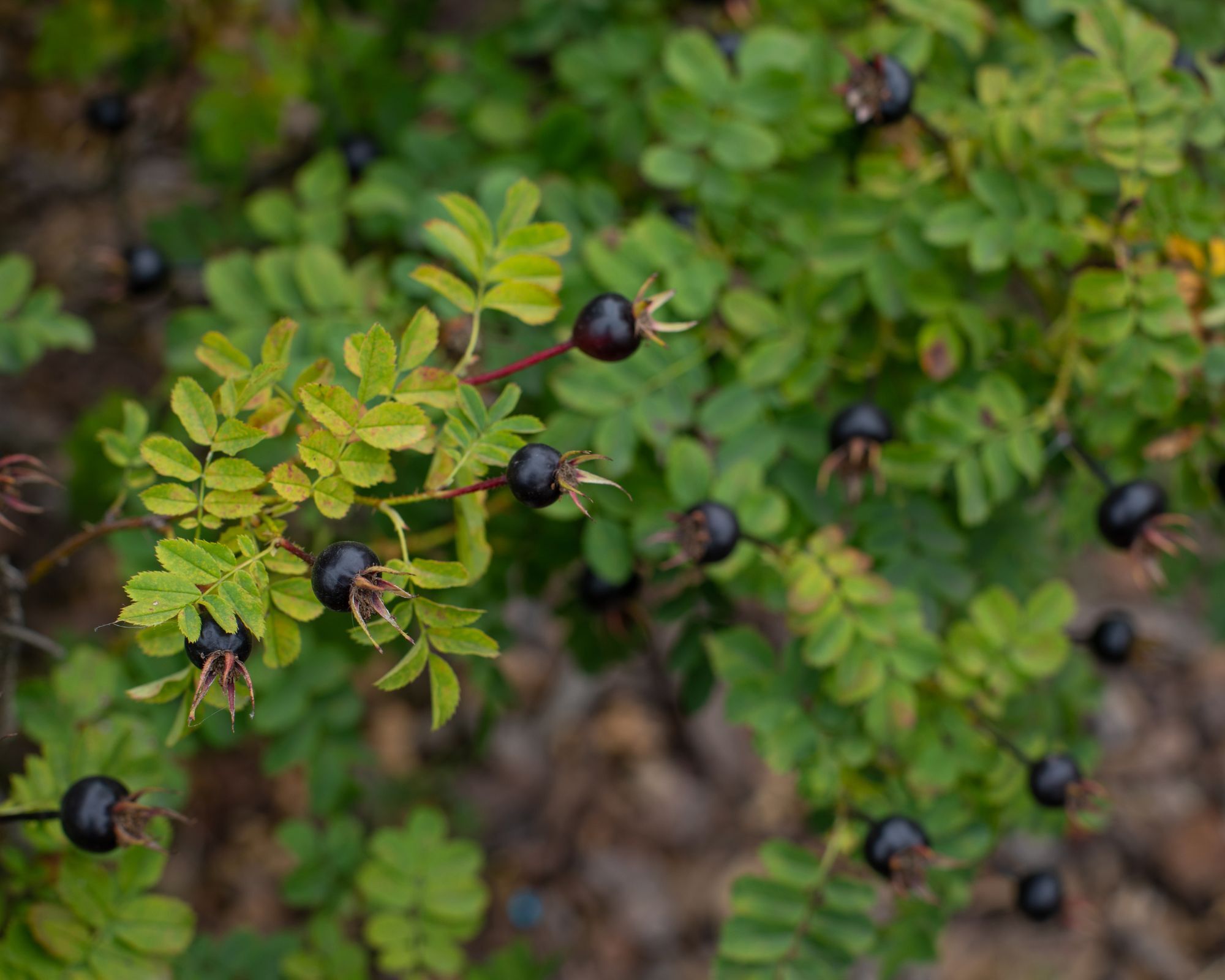
The stunning dark black purple rosehips on Rosa spinosissima
One of the very best plants for pollinators, Rosa spinosissima is always teeming with bees and butterflies in summer and aflutter with birds in winter.
If ever searching for rock garden ideas, this rose should be top of your list. Its compact habit (only growing to about one metre) means it works well at the front of a border, too.
Covered in pronounced thorns, it is one of the best rabbit repellent plants, and very drought resistant. It's a rose that you can plant and leave to its own devices - a truly contented little rose.
You can buy Rosa spinosissima from High Country Roses.
3. Moyes rose (Rosa moyesii)
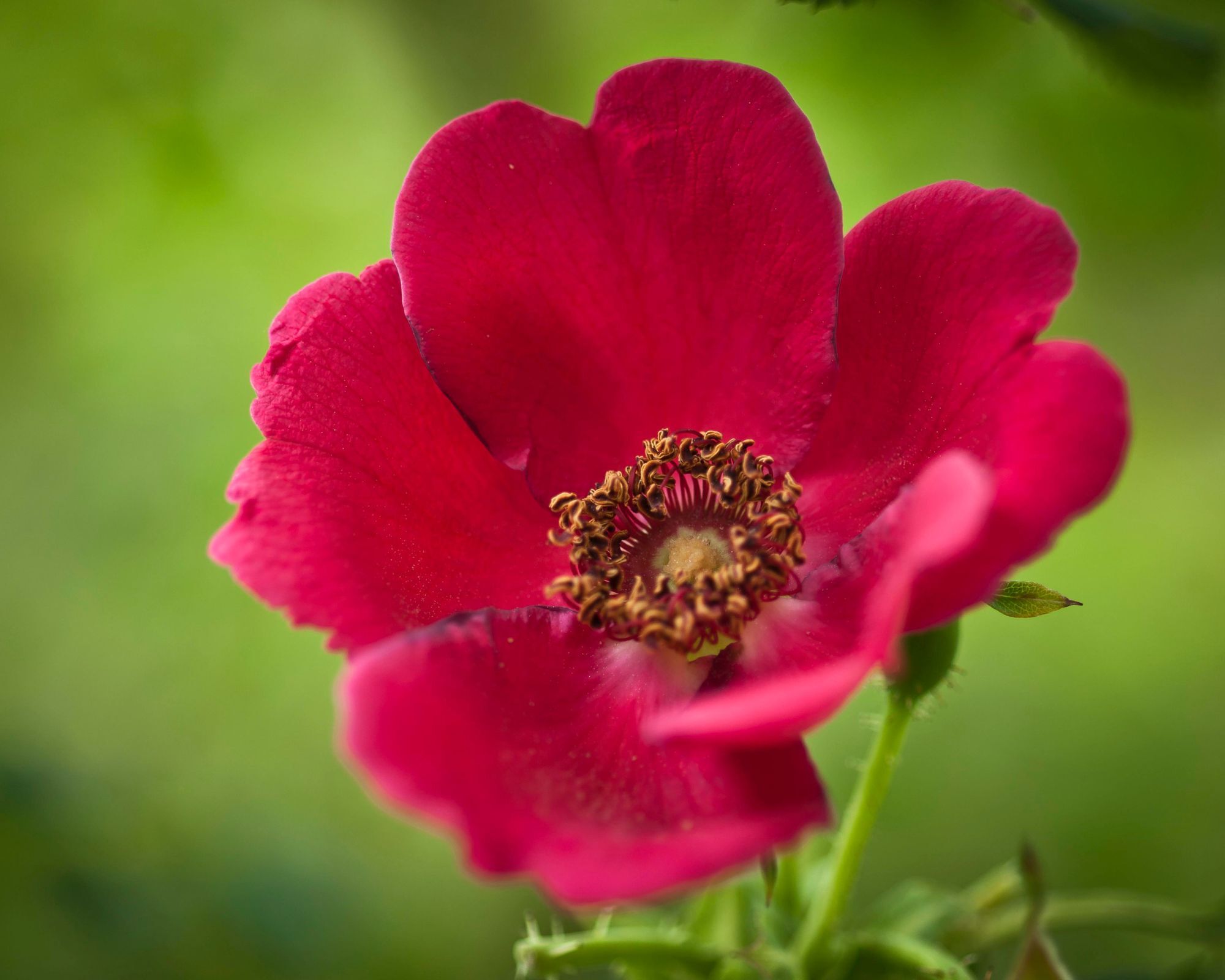
The lipstick red Moyes rose is a firm favorite amongst honey bees and butterflies
If you have a wild part of your garden, Moyes rose (Rosa moyesii) is nigh on essential. You do not need woodland or acres to grow it, though it is a tall, vigorous bush with long, arching stems, so most definitely a back-of-border rose, and definitely too big for a small garden.
The flowers are a shock of scarlet red, and the elongated waxy red rosehips are impressive, to say the least.
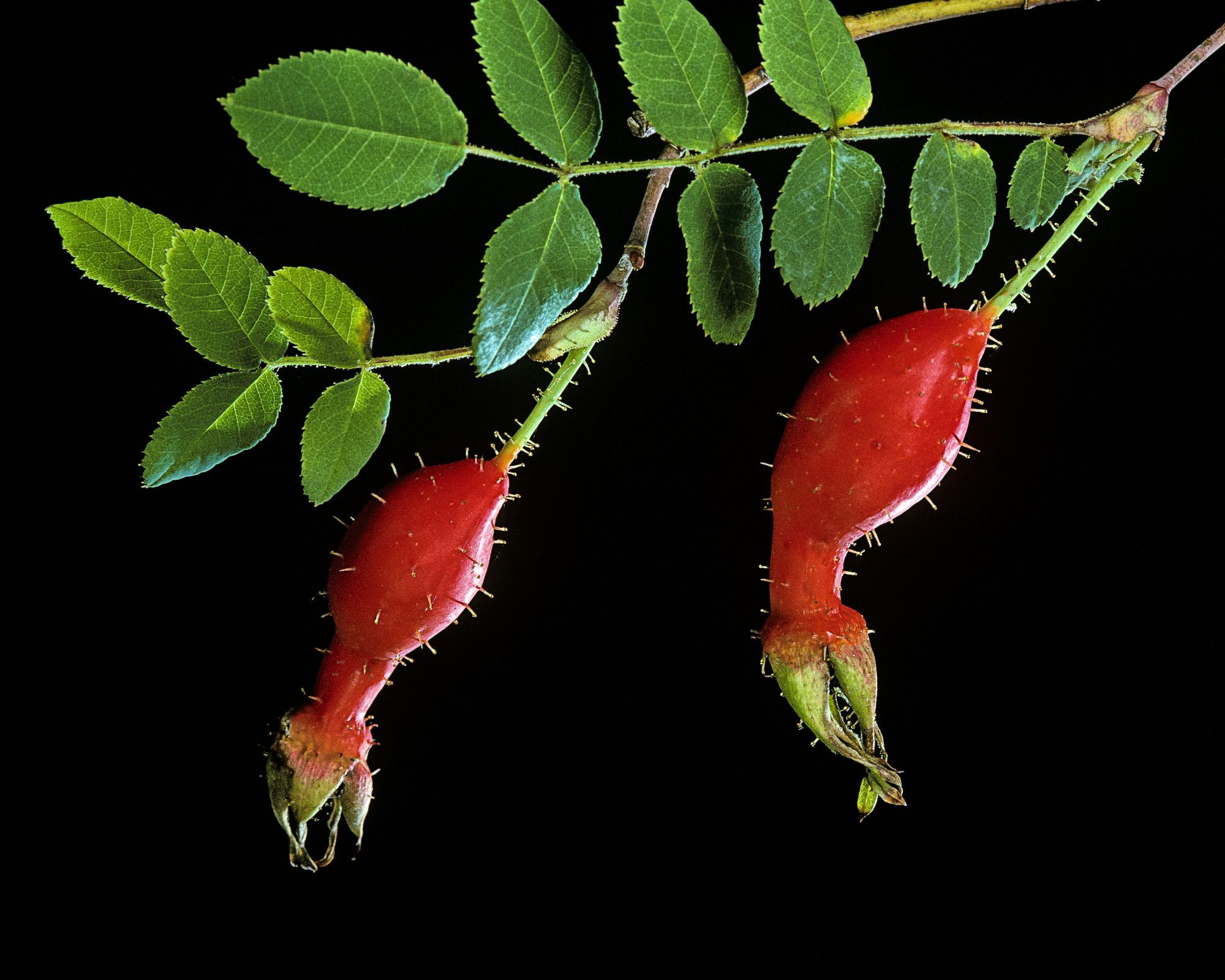
Large vermillion red flagon shaped rosehips on Rosa moyesii
4. Rosa filipes 'Kiftsgate'
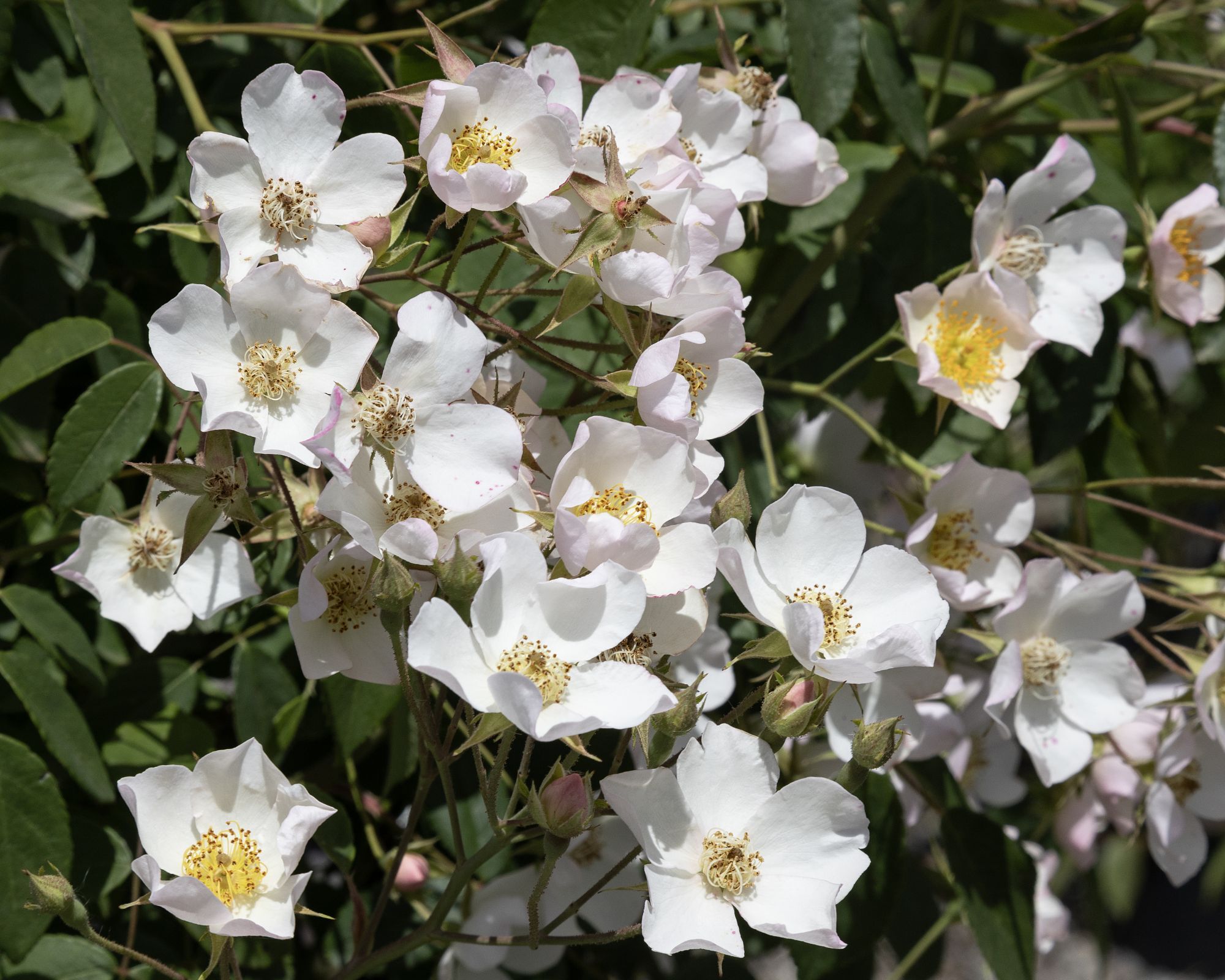
R. filipes 'Kiftsgate' is an extremely tall rambling rose reaching whopping heights of over 60ft. Flowering in June and July, the flowers are followed by an equally wonderful crop of small, oval-shaped, coral-red hips.
The Kiftsgate rose (R. filipes Kiftsgate') is an extraordinarily tall and rampant rambler rose, is a prominent feature at Kiftsgate Court Gardens, a truly sensational garden nestled in the bucolic Cotswolds.
In summer, the foliage is smothered in huge sprays of wonderfully fragrant single white flowers, followed by masses of tiny orange-red rosehips.
The rosehips are ornamental and not to be eaten. Though this rambling rose reaches such dizzying heights of up to 60ft, it is hard to imagine being able to reach the hips in any case.
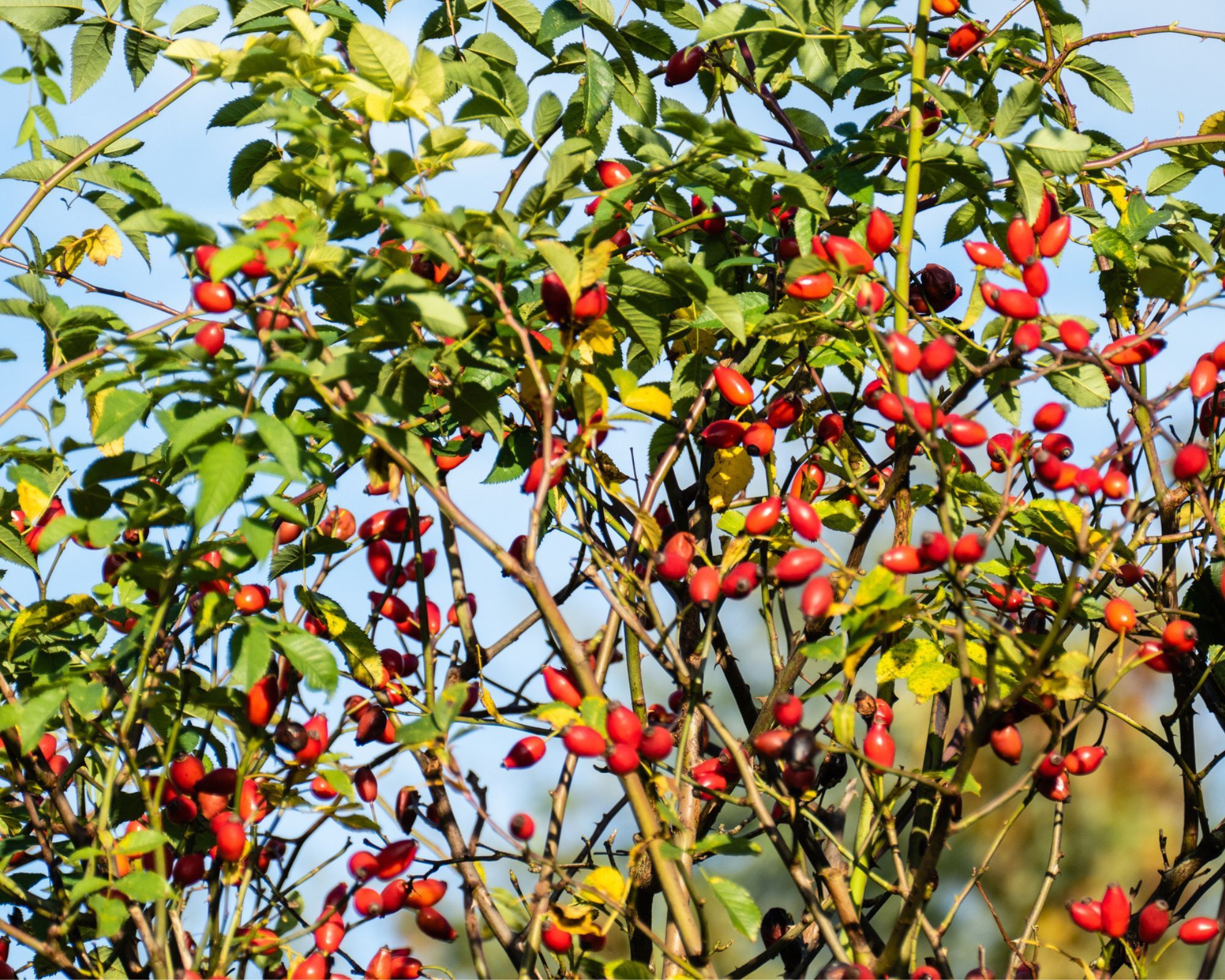
Many rambling roses produce stunning rosehips. ‘Kew Rambler’ and ‘Bobbie James’ are also generous flowerers and equally as generous with their delivery of winter rosehips.
As far as the best rambling roses go, though, Kiftsgate by far produces the most spectacular display of blazing coral-red oval-shaped rosehips. Though a warning word: this rose grows vigorously, so only plant it if you have space to allow it to soar.
5. Red Japanese Rose (Rosa rugosa)
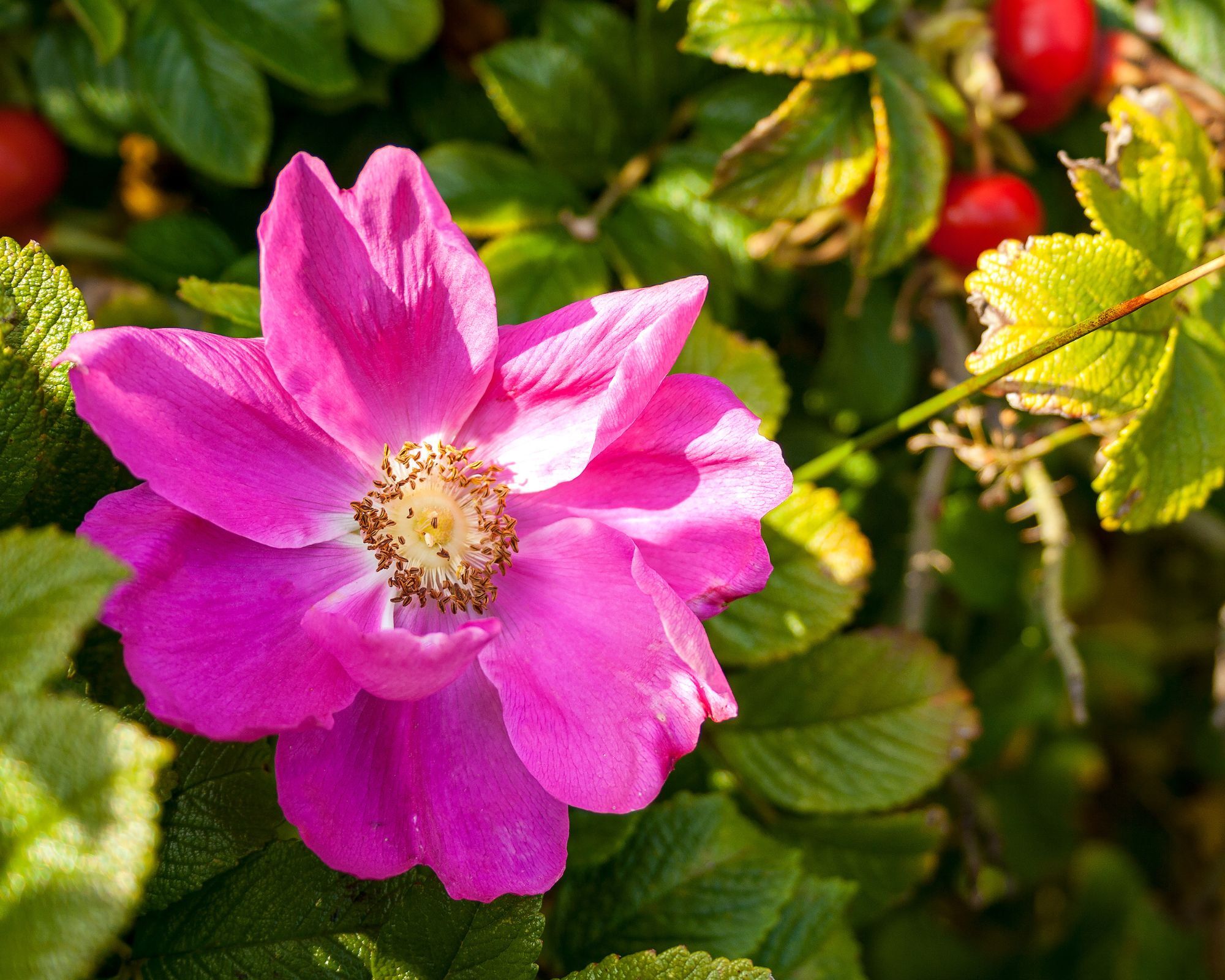
The magenta pink flowers of the Rosa rugosa
The Red Japanese Rose, botanically referred to as 'Rosa rugosa', isn't red at all, but a riot of hot pink.
It is a marvel in every way a rose can be, not least for the mass of razor-sharp thorns and its non-stop repeat flowering that, with or without deadheading, continues to flower relentlessly with wild abandon.
It sprawls undeterred by anything in its wake, and this makes it the perfect rose for mass planting for screens or flowering hedges. Few roses are so resistant to disease, and they it tolerant of nearly all weather conditions, being both winter hardy and perfectly happy growing in even the harshest of coastal regions.
However, the real spectacle comes in fall, when it produces cascades of thumping great cherry tomato-shaped carmine-red hips. These rosehips are truly remarkable. So enormous, they look like freshly picked radishes ready to be chopped into a salad.

The huge tomato shaped rosehips on Rosa Rugosa
The hips are so resplendent and extravagant, and appear in such huge crowds, you can afford to pick many bunches for indoor decorations, or making jellies and jams, and the rose will still be brimming with hips.
You can buy Rosa Rugosa at Garden Goods Direct.
6. The King's Rose
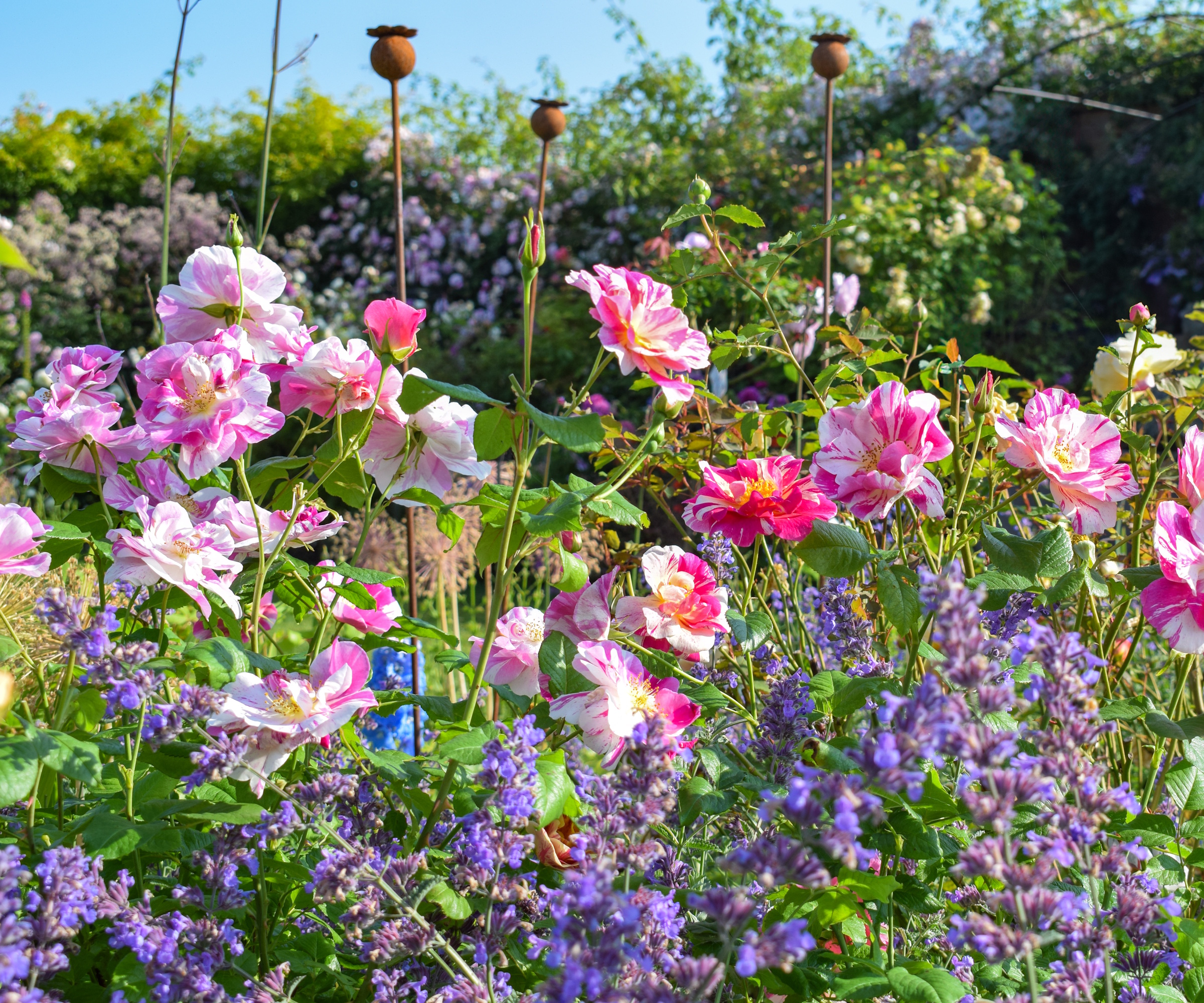
The King's Rose by David Austin Roses growing amongst throngs of catmint
The King's Rose is a newcomer to the rose scene, but it has made quite an entrance. The rose is known for its oh-so-pretty pink and white, semi-double blooms and its lovely perfume.
The King's Rose is a prolific flowerer, making it one of the best cutting garden flowers to grow, and has an excellent vase life. But perhaps its most charming feature is the beautiful terracotta orange rosehips it produces in the winter.
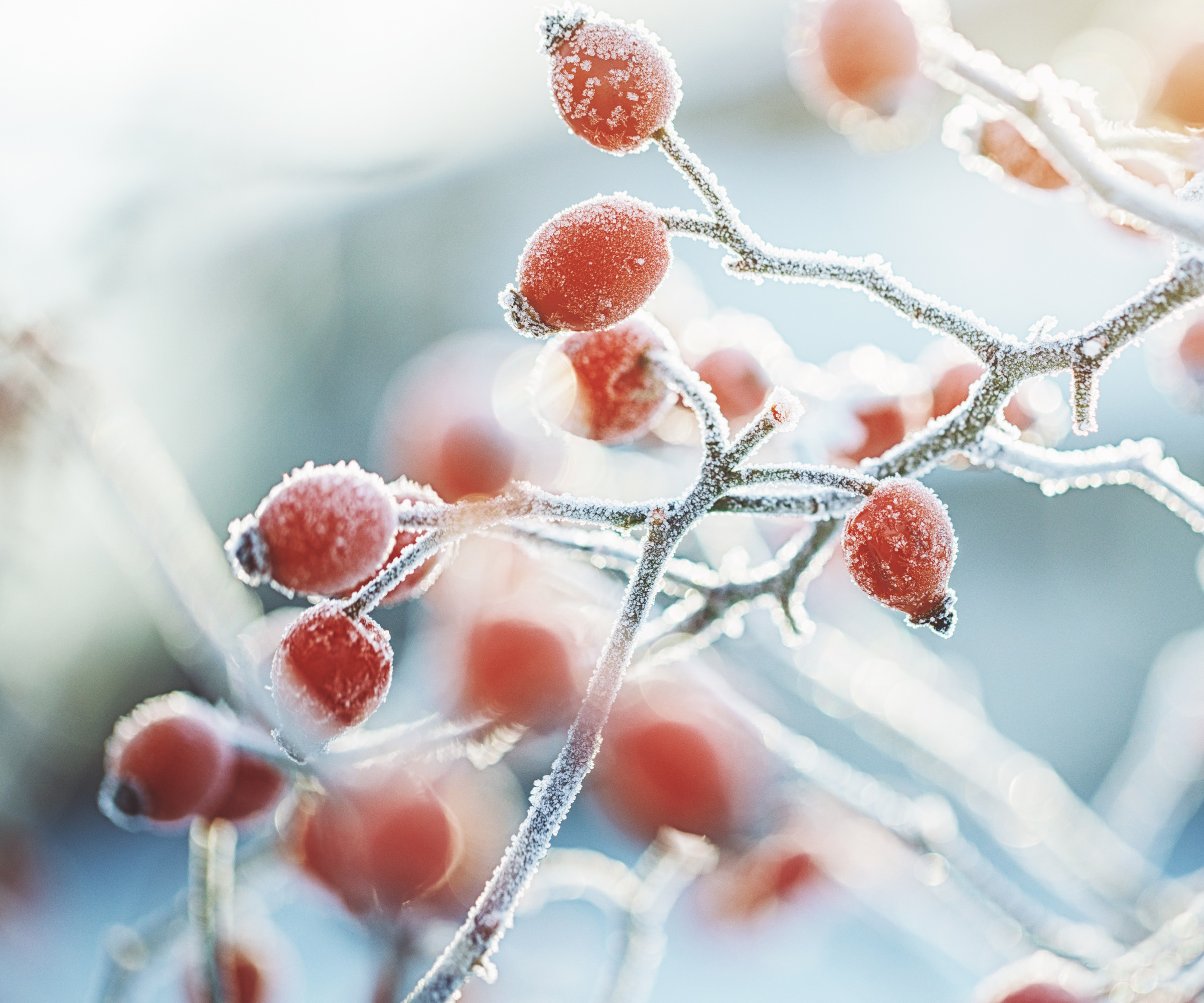
Delay pruning your roses until February or March to keep a consistent supply of food for birds throughout winter
Birds, which are always in search of food in the winter, flock to this rose to nibble away at the nutrient-dense hips, so it's well worth leaving them on there throughout winter and delaying pruning until late winter or early spring.
You can buy The King’s Rose from David Austin Roses
Shop rose care essentials
To allow your rose to bear hips, it's important to adjust your rose care routine accordingly. Do not deadhead your roses, and do not prune them until the end of the winter, in February or March.
Although many rosehips can be used for making oils, syrups, and teas, bear in mind that some rosehips are strictly ornamental, so you must read up on the species of rose you are growing to see if the rosehips are fit for consumption before cutting them for culinary creations.
Since rosehips contain the rose's seed, when a bird eats the hips, it will disperse the seeds around in their droppings, meaning they spread the seeds to new locations. Come spring, new plants could emerge thanks to the hips in your garden, so it is well worth leaving the hips in place and letting them work their magic.

Sophia Pouget de St Victor is the UK Content Editor at Homes & Gardens, bringing readers the latest trends, expert insights, and timeless design inspiration tailored to a UK audience. With a background in luxury interiors and a qualification in Garden Design from London, she has a passion for creating spaces with character and emotional depth. Sophia gravitates toward interiors that defy definition, valuing individuality and effortless elegance. She lives in West London with her partner, two mischievous terriers, and a plump cat named Lettuce.
